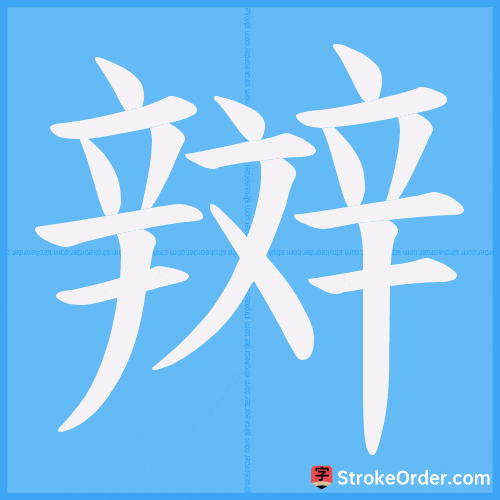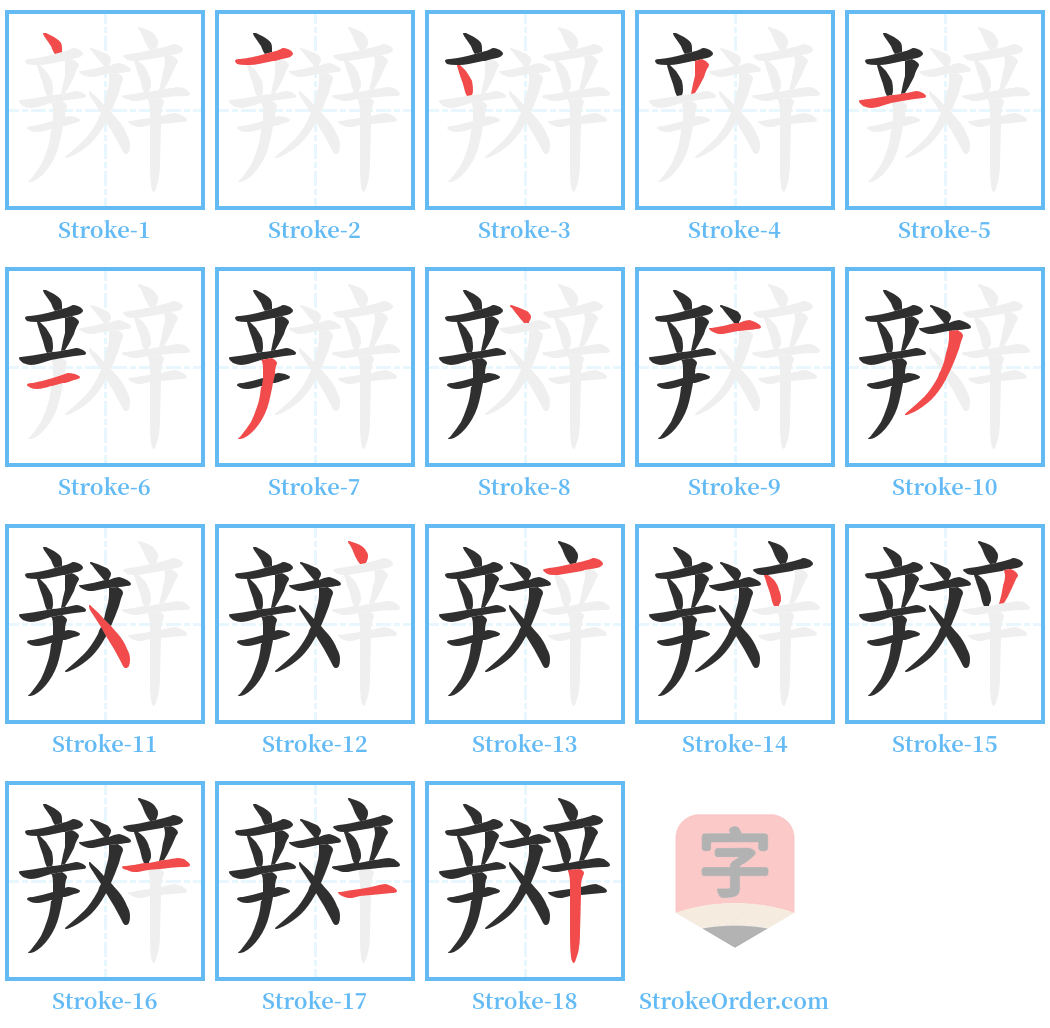辬 Stroke Order
Animated Stroke Order of 辬

Stroke Order Diagrams for 辬

Information of 辬
Pinyin
bān
Radical
辛
Strokes
18 strokes
Usage
★★
Definition
辬 (jué)
1.杂色花纹;颜色驳杂不纯。
Mixed color patterns; colors that are mottled and impure.
《説文•文部》:“辬,駁文也。”段玉裁注:“謂駁襍之文曰辬也。馬色不純曰駁,引伸為凡不純之偁。”
"Jué refers to patchy patterns." Duan Yucai's note: "The mixed patterns are referred to as jué. A horse with impure color is called 'bó', which extends to anything that is not pure."
《廣雅•釋詁三》:“辬,文也。”
"Jué means patterns."
2.头发花白。
Hair that is mixed white.
清段玉裁《説文解字注•文部》:“辬,頭黑白半曰頒,亦辬之假借字。”
"Jué refers to hair that is half black and half white, and is also a borrowed character for jué."
《淮南子•泰族》:“市買不豫賈,田漁皆讓長,而辬白不戴負,非法之所能致也。”
"Merchants do not engage in business that is not due to sin, and the fish and produce in the fields are given away, while the mixed white hair does not carry any burden, which is something that cannot be achieved through wrong means."
高誘注:“辬白,頭有白髮。”
"Juébái means having white hair."
3.通“徧(biàn)。周遍。
Corresponds to "biàn" (遍). Universal.
清顧藹吉《隸辨•線韻》:“辬,以辬為徧,亦聲相近而借也。”
"Jué, used as 'biàn', is also a borrowing due to phonetic similarity."
《樊毅脩華嶽碑》:“乃列祀典,辬於羣神。”
"It lists the sacrificial rites and is universal among the multitude of deities."